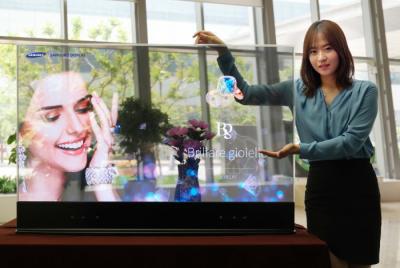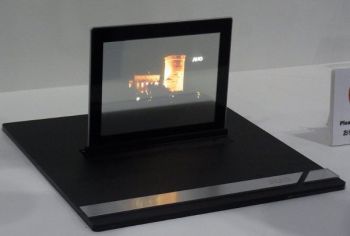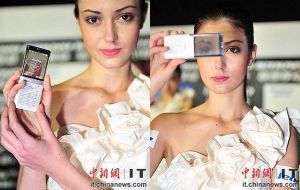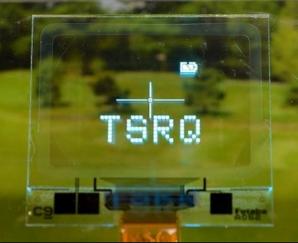Transparent displays are of great interest, and many envision a plethora of possible applications that use transparent screens in the retail, commercial and consumer markets. There are many exciting applications - but none with real and immediate demand.
Many OLED makers are developing transparent OLEDs, and in the past we've seen several producers that introduced such displays to the market - only to halt production a few months later. Device makers are on the lookout for such displays, and are still disappointed even though the technology is ready.
Large-area transparent AMOLEDs
In June 2015, Samsung Display unveiled its 55" mirror and transparent OLED display panels and in early 2016, the Company started shipping such displays to early customers (the first such customer was a hair salon in Seoul) and to display partners such as Planar Systems and Eyevis. This was very exciting to many, but shortly after shipping started, Samsung decided to halt production as it reportedly wanted to focus on smartphone OLEDs.

As of today, such large-area transparent OLEDs are still not in production. We have seen LG Display demonstrating transparent OLED TVs for many years (including a 77" flexible transparent panel) - but real commercial production hasn't begun yet.
Transparent automotive AMOLEDs
Since 2016 or so, both Samsung Display and LG Display have repeatedly demonstrated small/medium-sized transparent OLEDs for the automotive market. In May 2018, Samsung demonstrated a transparent 4.94" 360x112 (76 PPI) AMOLED that offers a transparency of 44%. These automotive displays aren't in production yet.
Transparent OLEDs for AR?
One possible application for transparent displays is Augmented Reality (AR). Most hardware-based AR projects revolve around head-mounted displays (based on microdisplays). However, it is also possible to use larger panels for AR, and in 2018 Taiwan's AU Optronics (AUO) developed and demonstrated a 13-inch 100 PPI transparent OLED display, specifically for AR applications. This is a highly-transparent display - with 68% transmittance.

Transparent PMOLEDs
In 2010, Futaba and NeoView Kolon started to produce small transparent OLEDs, ranging from 1" to 2" in size. Futaba's 2" 320x200 transparent PMOLED was adopted in Lenovo's S-800 feature phone in 2010.

But both Futaba and NeoView Kolon found it difficult to find customers for these displays. NeoView Kolon halted operations in 2016, and Futaba halted its transparent OLED production.
While several PMOLED makers today have the capability to produce transparent PMOLEDs (including Futaba and Truly), none are producing standard panels (except for segmented ones, see below). If there is a need for a large number of such panels, it is possible to order a custom transparent PMOLED - but this is relatively expensive and will require ordering a large quantity.
In 2013, We posted a hands-on review of 4D Systems 2" 128x160, 65K color transparent OLED which was based around Futaba's panel. Even today we still get many requests for this display - five years after the original review and many years since Futaba halted its transparent OLED production. Hopefully we will see PMOLED makers bring back production of transparent PMOLEDs in the future.
Transparent segmented displays
As we mentioned below, while dot-matrix transparent PMOLEDs are not in production, simpler segmented displays are shipping today. Segmented displays are the simplest form of displays, offering a few set icons or simple numeric displays.
Several companies are producing such displays today. Wisechip, for example, is offering a 4.1" (106x37.9 mm) segmented T-OLED aimed for automotive HUD applications, while both Truly and Futaba offer small displays for rifle sights.

Futaba's ELA0502AAGS (shown above) is a segmented monochrome (white, blue or amber) T-OLED that features high transparency (80%), a glass outline of 22 x 20 mm, an active area diameter of 0.59" and a high brightness (1,000 cd/m2).

